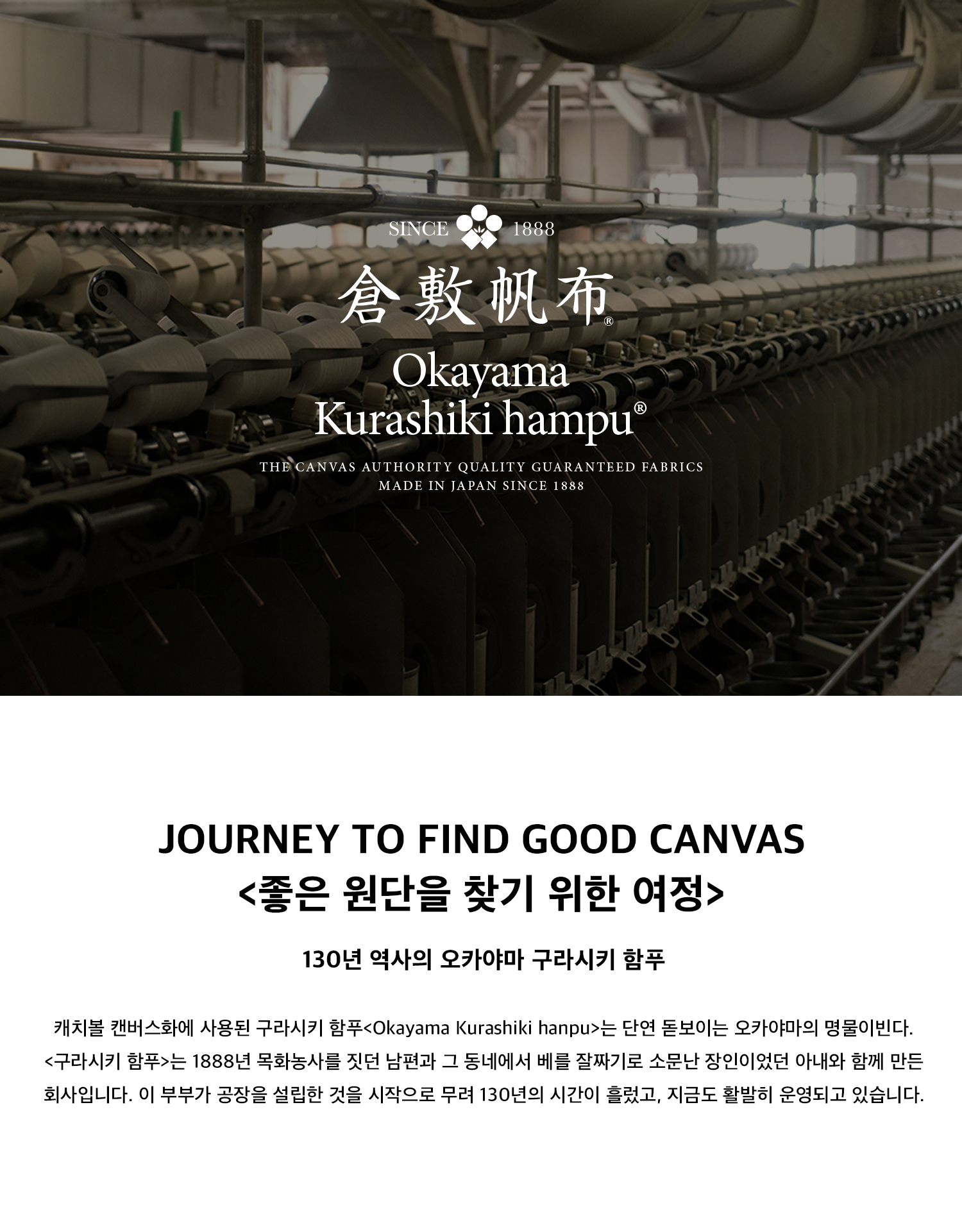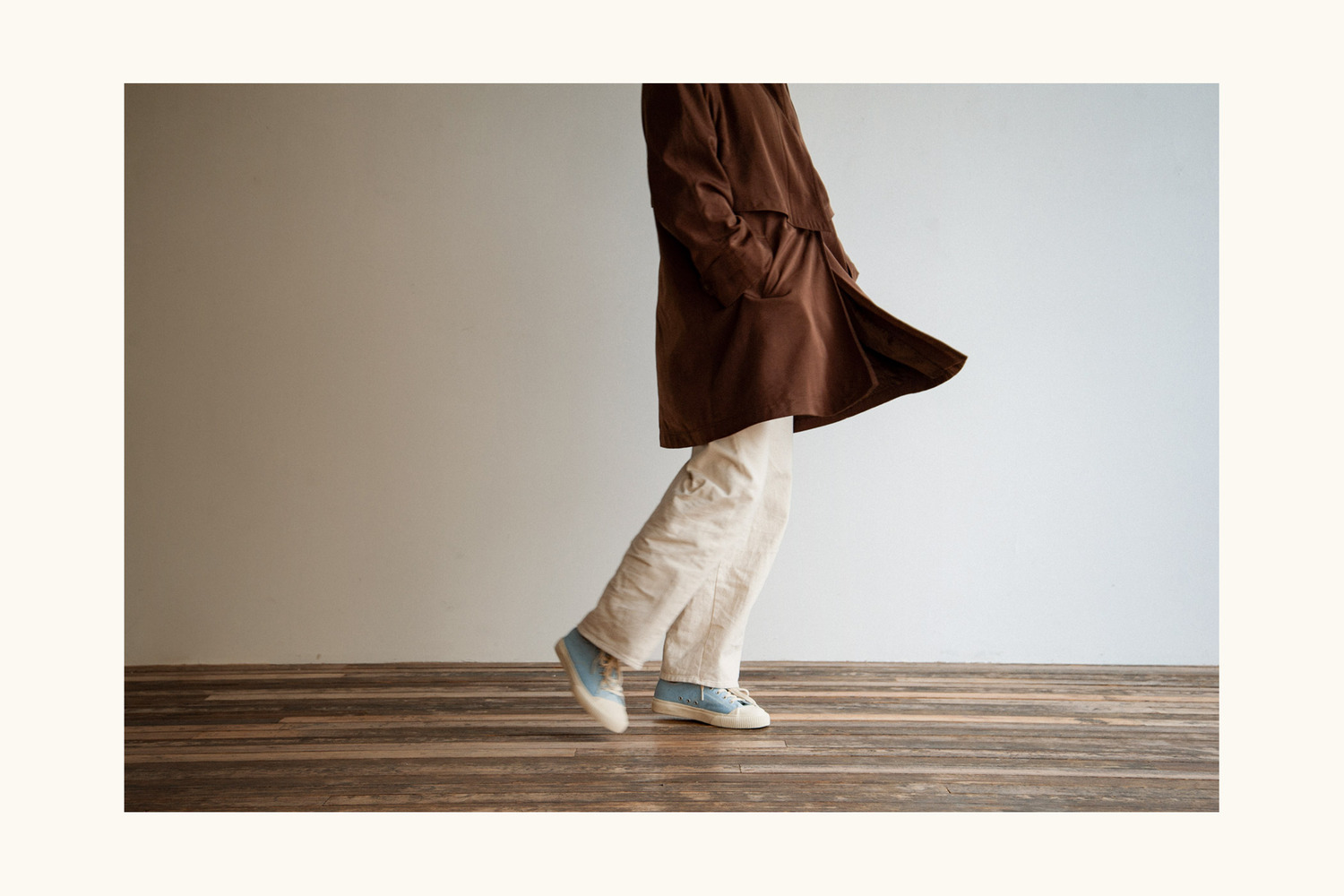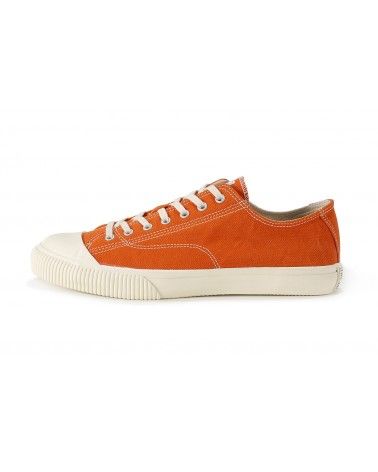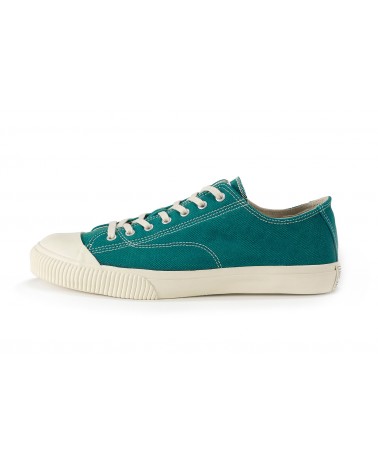All products from Catch Ball x EHS


The meeting between two iconic brands, a unique collaboration between the Japanese Catch Ball (with brusher Co behind) and the Italians of East Harbour Surplus, with the backdrop of The Tennis and American sports shoes of the 1950s as inspiration. A mix that crosses continents to create a small low sneaker among the coolest on the market, and difficult to find so far in France.
When Brusher decided to launch their Catch Ball project ("Catch the Ball" in homage to the image of Epinal of the American kid putting on his canvas tennis to spend the whole summer playing Baseball), they decided that three factors were paramount: what materials would be used, how would they be produced, and what was the story behind this pair of shoes.

To find an ultra-resistant canvas (Canvas) he turned to the Okayama region of Japan, cradle of the spinning industry, and known for these products made of Denim and canvas for a long time. Okayama canvas is renowned around the world for being strong, durable, water resistant and breathable, It is often used for sail canvas or military bags. In this region, an old company stands out for its know-how and experience: the textile company Otomo, founded in Okyama, Japan, in 1888, and known for its hyper-resistant canvas, the Hampu Okayam Kurashiki canvas, the best in the region. Mr. Otomo practiced cotton cultivation and his wife was a very famous craftsman as a hemp weaver. This company created 130 years ago by the Otomo family is still in operation today (and run by Mr Otomo's great-granddaughter).
One of the characteristics of this canvas is that it is still made on the old shuttle spinning machines, and requires a huge amount of hand work (hence a much longer production time and a much better quality production than the classic sneaker canvases). Generations of master craftsmen who created this fabric 130 years ago and perfected a technique that earned it this reputation today in the world.
This artisanal method with an old spinning machine goes against the current development of synthetic fiber technology and hyper-industrialized techniques for high bass consumption. But that's exactly what Catch Ball wants: a sneaker with a durable, solid canvas that resists time and seasons (hence their slogan: " Keeps Beauty Through Years of Use "), and make more than just a mass market industrial commodity.
Most canvas shoes are known for their cheap quality, tendency to tear easily and get wet at the slightest drop of rain, due to their rapid production. We use them one season and buy a pair the following year. Which in the end is not very clever economically, and not very viable ecologically (if we buy more often, we must necessarily produce more too).
To remedy all this, Catch Ball has thought of all the details of their pair of sneakers:
An ultra-resistant canvas
The Kurashiki Hampu® canvas used here, is built in solidity with a thick surface at high density. This is achieved through the slow and methodical weaving technique. With this traditional weave, the material retains more air which makes the canvas more absorbent, and also more comfortable to wear. From a rough cotton thread, a thick and resistant lime fabric is created, and a canvas that softens over time. It is water resistant, breathes with your feet and keeps all its beauty over the years. If you are told that it is considered among the best paintings in the world...
Vulcanization
This is not a tribute to Star Trek, but the name of the traditional process of cooking the rubber sole. This unique Japanese technique is performed by a handful of craftsmen named "ka-ryu" in Japanese, and is passed down from generation to generation. It involves each pair of shoes being baked, which gives their rubber soles a very soft finish and particularly flexible and durable. All shoes are thus made by hand by fixing a rubber paw on the canvas and putting them in an oven to cook them.
Organic dyeing and washing
A special technique is applied to Kurashiki Hampu® canvas: bio-enzymatic dyeing that is applied during the production of the canvas fabric. In this process, the canvas absorbs enzymes, which gives it a slightly faded effect and an ultra-soft touch. This enzyme gives life to the canvas and creates a unique and durable color.
An irreproachable finish
On the front of the shoe, there are three rows of seams that prevent the canvas from tearing over time, and three eyelets on the bottom provide better air permeability. A small detail that will make all the difference during the summer heat. The front is embellished with a nose with tip (with a very 1950's design) to avoid wear and form a resistant shell. It covers the upper part of the canvas, and covers your toes, which also helps the shoe to maintain its original shape and prevent it from being damaged. Finally, the back of the shoe is reinforced with a V-seam, designed to cover your ankle, for more comfort (and elegance!). And we don't forget the little vintage logo label sewn on the inner tongue, for attention to detail, with an old illustration of the shuttle machine and a brief history of Kurashiki Hampu.
A comfortable Ortholite ™ sole
Ortholite ™ is the material most often used for the design of shoe soles. It is often found in sports shoes to improve performance in activities such as running, track and outdoor sports. These insoles offer better cushioning than the EVA insole (typically found in Vans or Converse) and also eliminate foot odors due to its air permeability and moisture barrier function.
Now that you know all this, all you have to do is try them!


